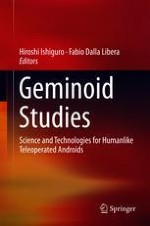2018 | OriginalPaper | Buchkapitel
5. Formant-Based Lip Motion Generation and Evaluation in Humanoid Robots
verfasst von : Carlos T. Ishi, Chaoran Liu, Hiroshi Ishiguro, Norihiro Hagita
Erschienen in: Geminoid Studies
Verlag: Springer Singapore
Aktivieren Sie unsere intelligente Suche, um passende Fachinhalte oder Patente zu finden.
Wählen Sie Textabschnitte aus um mit Künstlicher Intelligenz passenden Patente zu finden. powered by
Markieren Sie Textabschnitte, um KI-gestützt weitere passende Inhalte zu finden. powered by
